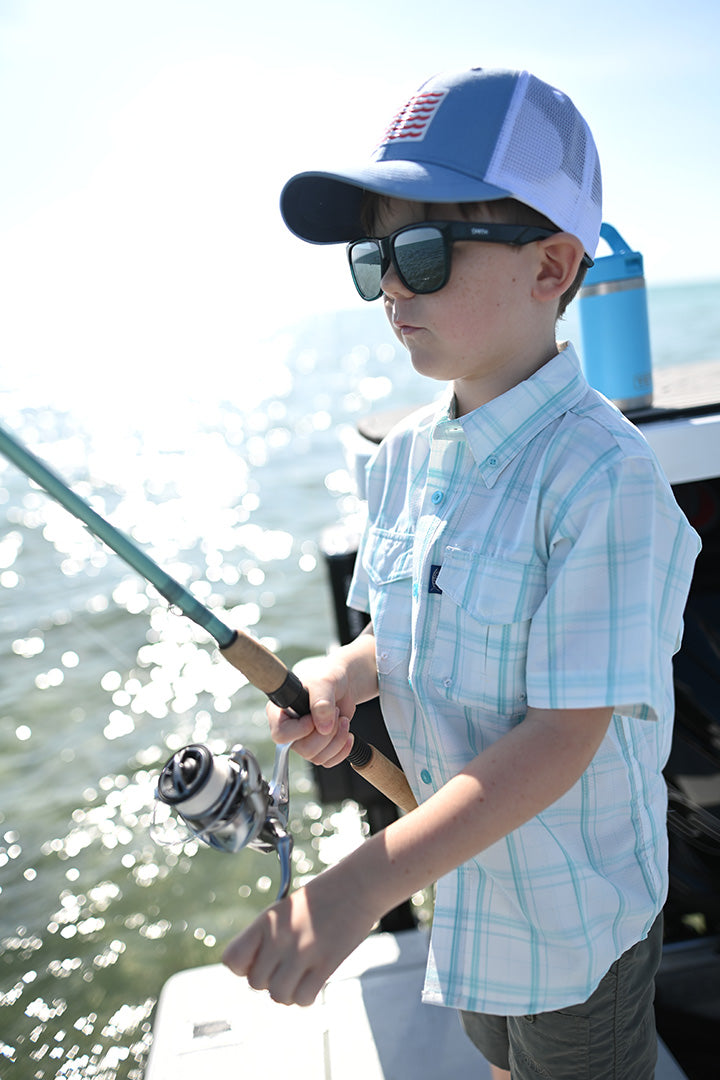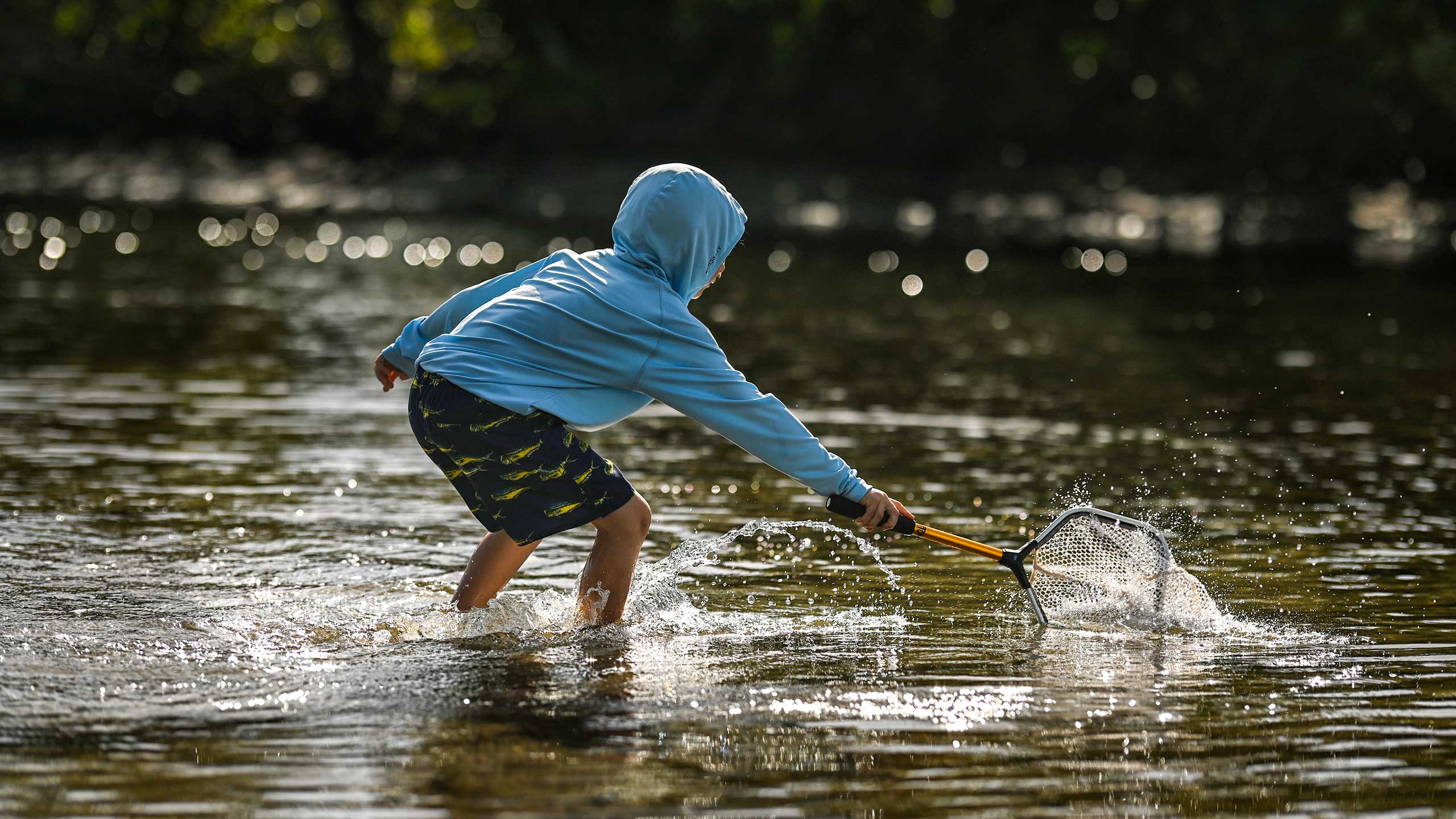
Saltwater Fishing For Beginners
If you are closer to the coast, saltwater fishing may be your introduction to fishing. You can view AFTCO's guide to fishing for beginners for tips on how to get started fishing from the beginning, and if you are closer to freshwater, take a look at our freshwater fishing for beginners to read trips from a professional bass angler on getting started freshwater fishing.
As a starting place, If you are having trouble finding areas for you to try fishing or have tried a few times and have not caught fish yet, you may want to do some research into a hiring a professional guide. Many guides are fantastic resources to teach you not only how to fish but can give you pointers on spots to try in the future.

Saltwater Gear Check: Rod & Reel
Whether you are on the east coast and you are targeting stripers, small tarpon and snooks, or you are on the west coast fishing for inshore sea basses, surf perch or halibut, there are a few things you should start with. Picking the right saltwater fishing gear for beginners is key. A good fishing rod to start with for inshore saltwater fishing is a 7-foot medium heavy rod with a 2500 size spinning reel that can hold 10-20 lb test. The line you put on that reel is a key component of saltwater gear. Your fishing rod will offer a recommended line LB test pairing. When first getting started we suggested you pick a little heavier line to make your tackle more manageable.


A saltwater spinning reel is the preferred weapon of choice for new anglers.
How to cast a spinning reel - To cast a spinning reel, you want to use your pointer finger to grab the line and hold the line while opening the bail. Pull the rod back to rotate over your dominant shoulder and swing forward making sure to point the rod at your desired target. As you swing the rod, release the line with your finger. This will take some practice to get the time right to get maximum casting distance. The momentum of the bait as you swing the rod is what pulls line off your reel and making sure the right movement, timing of release and rod position is critical to get a good cast. It's okay to take a bit to get used to casting. It may not seem like it, but every person just starting out fishing does the same thing. Practice makes perfect, and even then, professionals will occasional “wiff” a cast.

What About Bait?
Choosing good baits for saltwater fishing is also an important part of gear selection. In freshwater, a bass is a bass and they eat similar forage across the country with slight geographical difference. In saltwater, a fish on the West Coast will eat something completely unique from a fish on the East Coast. Even if they are the same species. Take the striped bass for example. On the east coast, the best way to catch them is using live American Eels. These are only found on the Atlantic coast though so on the west coast these fish are predominately eating finfish native to the Pacific Ocean. So, the best way to find lures or live bait to throw in saltwater is to find a local tackle store, and look at their live bait options, as well as their lures. Many tackle shops only keep inventory of lures and live bait that are used to catch the fish in your area. Good choices may be bait such as anchovies, bloodworms, shrimp, clams, and mussels.

The best saltwater fishing location for beginners - For anyone trying to introduce a younger child in to fishing in the saltwater, fishing piers are great spots for beginners. There are many public piers throughout the US in coastal waters that provide easily accessible fishing spots when you are lugging around lots of snacks and extra gear. Many of these public piers attract lots of species of fish and many of them reef style fishes that are perfect for beginners to get the hang of catching. When taking kids fishing, there are rigs used to catch bait fish that work well for someone just starting out. Some bait fish fight hard on light line and are fun for younger kids to pull on. Sabiki rigs are one form of these bait rigs with multiple hooks on them. If need be, cut a sabiki rig into two or three hook variants to make them easier to manage.
Wash your saltwater gear with freshwater after each trip - One essential tip when saltwater fishing is to not forget that salt corrodes metals. Many components of a fishing rod have metal in them, and the salt quickly can leave a fishing reel useless if not taken care of. After a fishing trip in the saltwater, it is critical to wash the salt off your gear before it corrodes. A simple rinse would be fine for your rods and reels, making sure you do get all the angles as well as the rod guides where there could be metal inserts. Do not submerge or leave anything soaking because the salt will stay in solution and your gear will corrode faster! With corrosion in mind, when you are buying fishing hooks, think about buying hooks that are not made of stainless steel if possible. Stainless steel has become popular because they last longer since they do not corrode. Unfortunately though, if they never corrode, then they also do not corrode inside of fish if the fish swallows a bait and you have to cut the line or if the fish breaks your line while you are fighting it. So, to make sure the fish survives with hooks in their stomachs and mouths, use hooks that do corrode and replace when needed.
Practicing conservation and respecting our natural resources is something that AFTCO is very passionate about. Always practice the "pack in, pack out" method never leaving behind plastic containers or trash, including soft plastic baits and fishing line. Following your state regulations when keeping your catch is paramount to preserving the resource as well. Make sure you are adhering to the size and creel limit if you decide to keep any of your catch. Most of all try to have fun and enjoy your time on the water!
